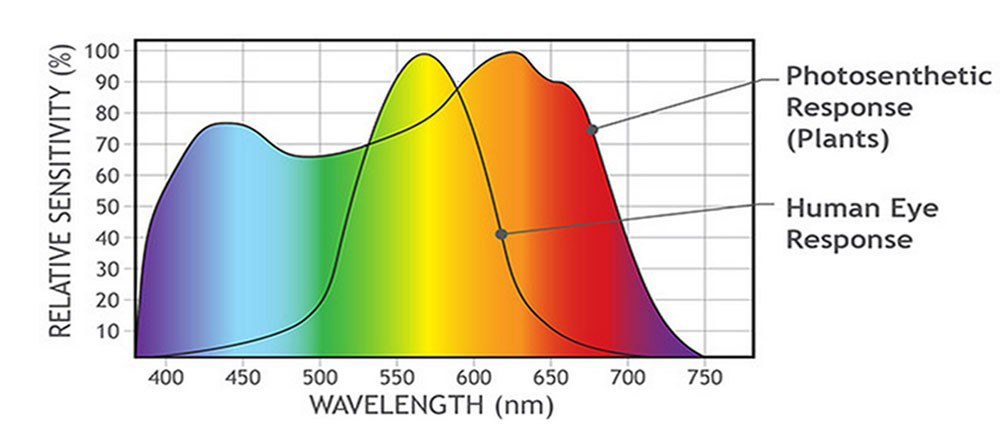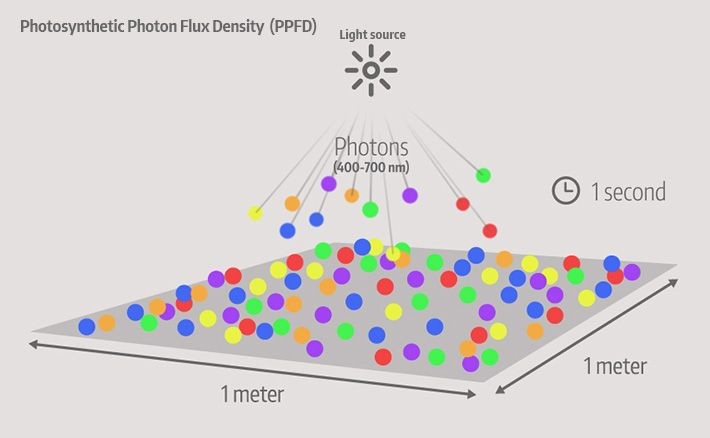How to choose a reliable LED grow light ?-Part one
LED plant /grow lights are numerous and their appearance may be the same or similar in the current market. However, the actual performance is huge difference, mainly manifested in the short service life, some products are damaged for several months or severe light decay /spectrum shift occurs during the service life.
So how to choose a qualified and reliable product has become an important issue for many users to consider. This article takes our 300W top lighting Horti-flag HL12 as an example to introduce some parameters that can be considered when comparing different products.
1. LIGHT METRICS
As we all know, the sensitive wavelength by plants is different from human eyes, and the units used to describe light intensity are also different, as shown in Figure 1 The human eye is more sensitive to yellow-green light, and the units of light intensity are lumen and lux. Plants are more sensitive to red and blue light, and the units of light intensity are μmol / s and μmol / s / ㎡. Plants mainly use light in the 400-700nm for photosynthesis, and this wavelength is also commonly known as Photosynthetically Active Radiation (PAR). Therefore, the units that should be used when considering the light intensity of plant lighting are μmol / s and μmol / s / ㎡.

2. μmol / s and μmol / s / ㎡
We will explain the specific differences between the two units below.
μmol / s refers to the photon of light that each lamp can emit per second. In another way, it can be understood as the luminous ability of each lamp. It can be likened to the horsepower of a car engine. Under the same displacement, the greater the horsepower, the stronger the power. Similarly, at the same power, when the lamp emits more photons per second, that is, the higher the μmol / s value, the higher the corresponding luminous efficiency, and this lamp is more energy-efficient. This is what we usually call photosynthetic quantum flux PPF (Photosynthetic Photon Flux), the unit is μmol / s.
And μmol / s /㎡ represents the light photon (PAR) per second in a specific light receiving plane. As shown in Figure 2 below, the figure shows the light photon obtained every second in the 1㎡ plane. When considering the supplementary light intensity, we will use this parameter more, because it represents the supplementary light intensity PPFD (Photosynthetic Photon Flux Density) on the plant light receiving plane. The supplementary light intensity is mainly determined by the local light conditions and the different crops planted. Even the same crops, the supplementary light intensity is not the same in different regions.

to be continued . we will show you other content next post.

